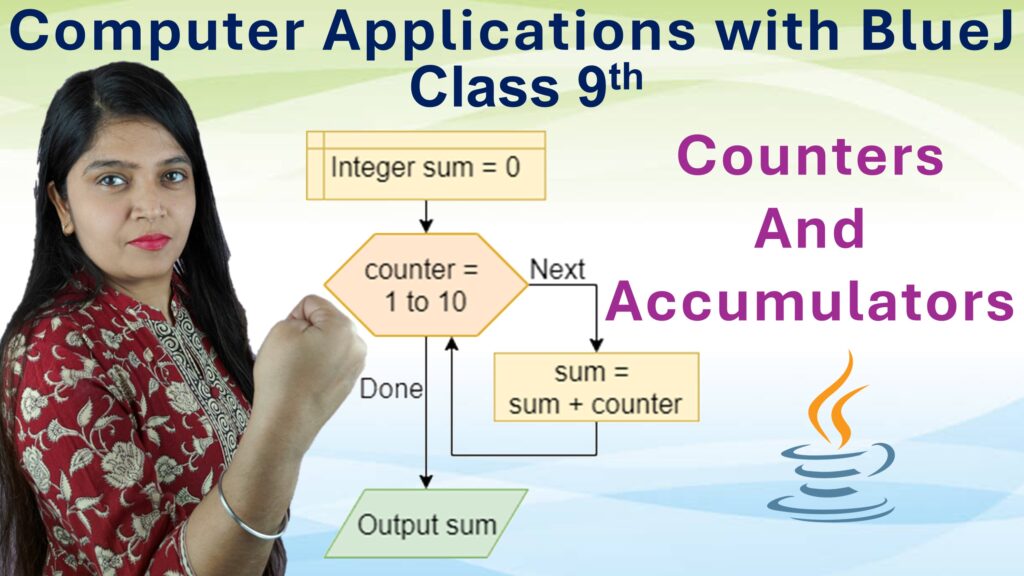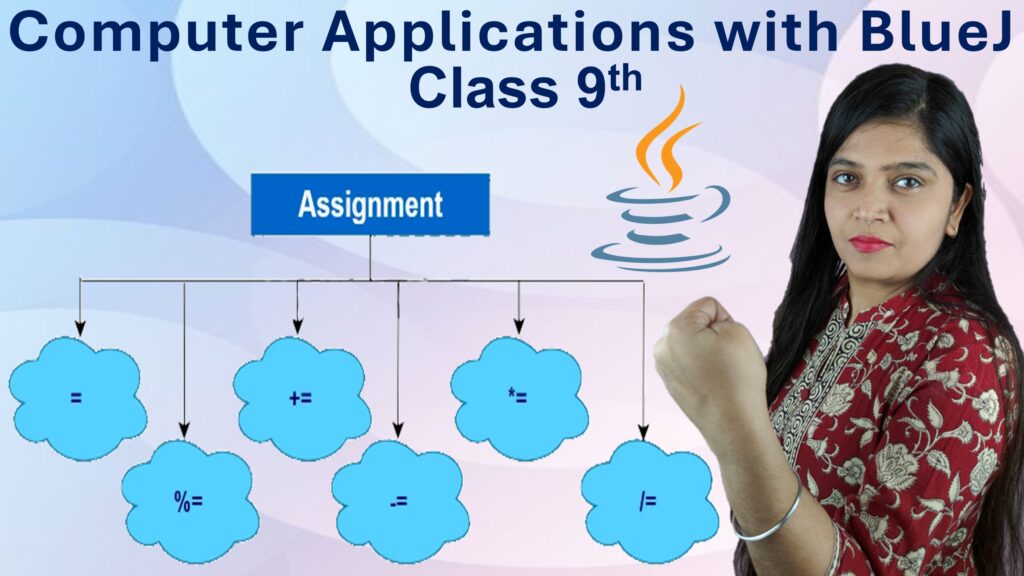Test Yourself
Q1: Multiple Choice Type
i. A Pythagorian triplet has one number equal to 6. The Pythagorian triplet are:
Let’s check the options by verifying \(a^2 + b^2 = c^2\) where 6 is one of the numbers.
– Option (a) 5, 6, 7: \(5^2 + 6^2 = 25 + 36 = 61 \neq 7^2 = 49\) (No)
– Option (b) 6, 7, 8: \(6^2 + 7^2 = 36 + 49 = 85 \neq 8^2 = 64\) (No)
– Option (c) 4, 6, 8: \(4^2 + 6^2 = 16 + 36 = 52 \neq 8^2 = 64\) (No)
– Option (d) 6, 8, 10: \(6^2 + 8^2 = 36 + 64 = 100 = 10^2\) (Yes)
Correct Answer: (d) 6, 8, 10
ii. The number of digits in root of 1210000 is:
First, find \(\sqrt{1210000}\).
\[
1210000 = 121 \times 10000 = 11^2 \times 100^2
\]So,
\[
\sqrt{1210000} = 11 \times 100 = 1100
\]Number of digits in 1100 is 4.
Correct Answer: (b) 4
iii. The greatest 3-digit perfect square number is:
Three-digit numbers range from 100 to 999.
Check the perfect squares closest to 999:
\[
31^2 = 961 \quad \text{and} \quad 32^2 = 1024 (> 999)
\]So, the greatest 3-digit perfect square is 961.
Correct Answer: (b) 961
iv. The area of a square plot is 441 m2. Its perimeter is:
Given, area = \(441 \, m^2\).
Side length, \(s = \sqrt{441} = 21 \, m\).
Perimeter, \(P = 4 \times s = 4 \times 21 = 84 \, m\).
Correct Answer: (b) 84 m
v. Statement 1: 3675 is not a perfect square.
Statement 2: After grouping into pairs of equal factors of 3675, if we multiply or divide by the unpaired factor (if any) then the product or the quotient becomes a perfect square.
Which of the following option is correct:
– Prime factorization of 3675:
\[
3675 \div 3 = 1225 \\
1225 \div 5 = 245 \\
245 \div 5 = 49 \\
49 \div 7 = 7 \\
7 \div 7 = 1
\]So,
\[
3675 = 3 \times 5^2 \times 7^2
\]Pairs are: \(5^2\) and \(7^2\). The unpaired factor is 3.
– Since there is an unpaired factor (3), 3675 is not a perfect square (Statement 1 is true).
– Multiplying by 3 or dividing by 3 will make it a perfect square (Statement 2 is true).
Correct Answer: (a) Both the statements are true.
vi. Assertion (A): \(\sqrt{\frac{121}{361}}=\sqrt{\frac{11}{19}\times\frac{11}{19}}=\frac{11}{19}\)
Reason (R): The square root of a number n is that number which when multiply by itself gives n as the product.
– Assertion is true because \(\sqrt{\frac{121}{361}} = \frac{\sqrt{121}}{\sqrt{361}} = \frac{11}{19}\).
– Reason is a correct definition of square root.
– Also, Reason correctly explains Assertion.
Correct Answer: (a) Both A and R are correct, and R is the correct explanation for A.
vii. Assertion (A): 49 is a perfect square, when divided by 3 remainder is 1.
Reason (R): When each of the perfect square numbers 1, 4, 9, ……… is divided by 3, the remainder is always 1.
– Assertion: 49 is a perfect square (true). \(49 \div 3 = 16\) remainder \(1\) (true).
– Reason: Check other perfect squares modulo 3:
\(1 \div 3 = 0\) remainder 1
\(4 \div 3 = 1\) remainder 1
\(9 \div 3 = 3\) remainder 0 ← not always 1
– Reason is false because remainder is not always 1 for all perfect squares.
– So, A true, R false.
Correct Answer: (c) A is true, but R is false.
viii. Assertion (A): Natural numbers 5, 12 and 13 are Pythagorean triplets as \({12}^2+5^2={13}^2\)
Reason (R): For any natural number n, \(\left(n+1\right)^2-n^2=\left(n+1\right)+n\)
– Check assertion:
\[
12^2 + 5^2 = 144 + 25 = 169 = 13^2
\]
So, true.
– Reason:
\[
(n+1)^2 – n^2 = (n^2 + 2n + 1) – n^2 = 2n + 1 = (n+1) + n
\]
So, Reason is true.
– But Reason is a formula for difference of squares, not the explanation for the assertion about Pythagorean triplets.
Correct Answer: (b) Both A and R are correct, and R is not the correct explanation for A.
ix. Assertion (A): 1+3+5+7+ ……… +21 = \({10}^2\)
Reason (R): The sum of first n odd natural whole numbers = \(n^2\)
– Number of terms: odd numbers from 1 to 21 are 11 terms (since 21 is the 11th odd number).
– Sum of first 11 odd numbers = \(11^2 = 121\), but assertion says sum equals \(10^2=100\).
– Assertion is false.
– Reason is true formula.
Correct Answer: (d) A is false, but R is true.
Q2: Express \({21}^2\) as the sum two consecutive whole numbers.
Step 1: Calculate \({21}^2\).
\[
21^2 = 21 \times 21 = 441
\]Step 2: Let the two consecutive whole numbers be \(n\) and \(n+1\).
Their sum is:
\[
n + (n+1) = 2n + 1
\]We want:
\[
2n + 1 = 441
\]Step 3: Solve for \(n\):
\[
2n = 441 – 1 = 440 \\
⇒ n = \frac{440}{2} = 220
\]
Step 4: So, the two consecutive whole numbers are:
\[
220 \quad \text{and} \quad 221
\]Verification:
\[
220 + 221 = 441 = 21^2
\]Answer: \({21}^2 = 220 + 221\)
Q3: Find the square root of \(10\frac{86}{121}\) by prime factorization method.
Step 1: Convert the mixed fraction to an improper fraction.
\[
10\frac{86}{121} = \frac{(10 \times 121) + 86}{121} = \frac{1210 + 86}{121} = \frac{1296}{121}
\]Step 2: Find the prime factorization of numerator and denominator separately.
– Numerator: \(1296\)
Prime factorization:
\[
1296 = 2^4 \times 3^4 \quad \text{(since }1296 = 36^2 = (2^2 \times 3^2)^2 = 2^4 \times 3^4\text{)}
\]– Denominator: \(121\)
Prime factorization:
\[
121 = 11^2
\]Step 3: Take the square root of numerator and denominator using prime factorization.
\[
\sqrt{1296} = \sqrt{2^4 \times 3^4} = 2^{4/2} \times 3^{4/2} = 2^2 \times 3^2 = 4 \times 9 = 36 \\
\sqrt{121} = \sqrt{11^2} = 11
\]Step 4: Therefore,
\[
\sqrt{10\frac{86}{121}} = \sqrt{\frac{1296}{121}} = \frac{36}{11}
\]Step 5: Express as a mixed number if desired:
\[
\frac{36}{11} = 3 \frac{3}{11}
\]Answer: \(\sqrt{10\frac{86}{121}} = \frac{36}{11} = 3\frac{3}{11}\)
Q4: Is 336 a perfect square? It not, find the smallest multiple of 336 which is a perfect square.
Step 1: Check whether 336 is a perfect square by finding its prime factorization.
\[
336 = 2 \times 168 = 2 \times 2 \times 84 = 2^3 \times 3 \times 7
\]
Let’s factorize stepwise:
\[
336 = 2^4 \times 3^1 \times 7^1
\]
Actually, let’s do it carefully:
\(336 \div 2 = 168\)
\(168 \div 2 = 84\)
\(84 \div 2 = 42\)
\(42 \div 2 = 21\) (So, \(2^4\))
\(21 \div 3 = 7\)
\(7 \div 7 = 1\)
So, prime factorization:
\[
336 = 2^4 \times 3^1 \times 7^1
\]Step 2: For a number to be a perfect square, all prime exponents must be even.
Currently:
\(2^4\) exponent is 4 (even) — okay.
\(3^1\) exponent is 1 (odd) — needs one more 3.
\(7^1\) exponent is 1 (odd) — needs one more 7.
Step 3: To make 336 a perfect square, multiply by the missing primes to make exponents even:
\[
\text{Multiply by } 3^1 \times 7^1 = 3 \times 7 = 21
\]Step 4: Smallest perfect square multiple of 336 is:
\[
336 \times 21 = 7056
\]Step 5: Verify the perfect square:
\[
7056 = 2^4 \times 3^2 \times 7^2
\]
All exponents are even, so 7056 is a perfect square.
Answer: The smallest multiple of 336 which is perfect square is 21.
Q5: Find the least number that must be subtracted from 980 so as to get a perfect square. Also, find the square root of the perfect number obtained.
Step 1: Find the approximate square root of 980 by long division method or estimation.
We know:
\[
31^2 = 961, \quad 32^2 = 1024
\]Since \(961 < 980 < 1024\), the greatest perfect square less than 980 is \(961\).
Step 2: Find the difference to subtract from 980 to get 961:
\[
980 – 961 = 19
\]Step 3: The perfect square obtained is 961, and its square root is:
\[
\sqrt{961} = 31
\]Answer: The least number to subtract is 19. The perfect square obtained is 961, and its square root is 31.
Q6: Find the smallest and the greatest 4-digit numbers, each of which is a perfect square.
Step 1: Understand the problem
4-digit numbers range from 1000 to 9999.
We want to find the smallest and greatest perfect squares in this range.
Step 2: Find the smallest perfect square ≥ 1000
We find the smallest integer \(n\) such that:
\[
n^2 \geq 1000
\]Calculate \(\sqrt{1000}\):
\[
\sqrt{1000} \approx 31.62
\]So the smallest integer \(n\) satisfying this is \(n=32\).
Calculate \(32^2\):
\[
32^2 = 1024
\]Hence, the smallest 4-digit perfect square is \(1024\).
Step 3: Find the greatest perfect square ≤ 9999
We find the greatest integer \(m\) such that:
\[
m^2 \leq 9999
\]Calculate \(\sqrt{9999}\):
\[
\sqrt{9999} \approx 99.995
\]So the greatest integer \(m\) satisfying this is \(m=99\).
Calculate \(99^2\):
\[
99^2 = 9801
\]Hence, the greatest 4-digit perfect square is \(9801\).
Answer: The smallest 4-digit perfect square is 1024 (which is \(32^2\)), and the greatest 4-digit perfect square is 9801 (which is \(99^2\)).
Q7: Because \(\sqrt{1849}=43\), find the value of:
i. \(\sqrt{0.1849}+\sqrt{18.49}\)
Step 1: Express the numbers in terms of 1849 with decimal shifts.
\[
0.1849 = \frac{1849}{10000} = \frac{1849}{100^2} \quad \Rightarrow \quad \sqrt{0.1849} = \frac{\sqrt{1849}}{100} = \frac{43}{100} = 0.43
\]\[
18.49 = \frac{1849}{100} = \frac{1849}{10^2} \quad \Rightarrow \quad \sqrt{18.49} = \frac{\sqrt{1849}}{10} = \frac{43}{10} = 4.3
\]Step 2: Add the two values:
\[
\sqrt{0.1849} + \sqrt{18.49} = 0.43 + 4.3 = 4.73
\]
Answer: \(\sqrt{0.1849} + \sqrt{18.49} = 4.73\)
ii. \(\sqrt{184900} – \sqrt{4 \times 18.49}\)
Step 1: Express the numbers in terms of 1849.
\[
184900 = 1849 \times 100 = 1849 \times 10^2 \\
\Rightarrow \sqrt{184900} = \sqrt{1849 \times 10^2} = \sqrt{1849} \times \sqrt{10^2} = 43 \times 10 = 430
\]\[
4 \times 18.49 = 4 \times \frac{1849}{100} = \frac{4 \times 1849}{100} = \frac{7396}{100} \\
\Rightarrow \sqrt{4 \times 18.49} = \sqrt{\frac{7396}{100}} = \frac{\sqrt{7396}}{10}
\]Step 2: Calculate \(\sqrt{7396}\).
Note that \(86^2 = 7396\) (since \(86 \times 86 = 7396\)).So,
\[
\sqrt{4 \times 18.49} = \frac{86}{10} = 8.6
\]Step 3: Subtract the values:
\[
\sqrt{184900} – \sqrt{4 \times 18.49} = 430 – 8.6 = 421.4
\]Answer: \(\sqrt{184900} – \sqrt{4 \times 18.49} = 421.4\)
Q8: The product of two numbers is 256. If one number is four times the other, find the number.
Step 1: Let the smaller number be \(x\). Then the other number is \(4x\).
Step 2: According to the problem,
\[
x \times 4x = 256
\]
\[
4x^2 = 256
\]Step 3: Divide both sides by 4:
\[
x^2 = \frac{256}{4} = 64
\]Step 4: Find \(x\):
\[
x = \sqrt{64} = 8
\]Step 5: Find the other number:
\[
4x = 4 \times 8 = 32
\]Answer: The two numbers are \(8\) and \(32\).
Q9: The area of a square plot is 2116 m2. A man takes 5 rounds of the boundary this plot, find the distance covered by him.
Step 1: Given the area of the square plot:
\[
\text{Area} = 2116 \, m^2
\]Step 2: Find the length of one side of the square:
\[
\text{Side} = \sqrt{2116}
\]Step 3: Calculate \(\sqrt{2116}\) using the division method:
\[
46 \times 46 = 2116
\]
So,
\[
\text{Side} = 46 \, m
\]Step 4: Find the perimeter of the square (distance around the square):
\[
\text{Perimeter} = 4 \times \text{side} = 4 \times 46 = 184 \, m
\]Step 5: The man takes 5 rounds, so total distance covered is:
\[
5 \times 184 = 920 \, m
\]Answer: The man covers a distance of \(920\) meters after 5 rounds.
Q10: Find the smallest square number which is divisible by 6, 9 and 15.
Step 1: Find the Least Common Multiple (LCM) of the numbers 6, 9, and 15 to ensure the square number is divisible by all three.
Prime factorization:
\[
6 = 2 \times 3 \\
9 = 3^2 \\
15 = 3 \times 5
\]Step 2: Take the highest powers of each prime factor:
\[
2^1, \quad 3^2, \quad 5^1
\]So,
\[
\text{LCM} = 2^1 \times 3^2 \times 5^1 = 2 \times 9 \times 5 = 90
\]Step 3: Now, the smallest square number divisible by 6, 9, and 15 must be divisible by 90 and also be a perfect square.
Step 4: Factorize 90 to check the powers of prime factors:
\[
90 = 2^1 \times 3^2 \times 5^1
\]To make it a perfect square, all prime exponents must be even.
For \(2^1\), multiply by another 2 to make power 2.
For \(3^2\), power is already even.
For \(5^1\), multiply by another 5 to make power 2.
Therefore, multiply 90 by \(2 \times 5 = 10\) to get a perfect square divisible by 90:
\[
90 \times 10 = 900
\]Step 5: Check if 900 is a perfect square:
\[
\sqrt{900} = 30
\]
So, 900 is a perfect square.
Answer: The smallest square number divisible by 6, 9, and 15 is \(900\).







Leave a Comment